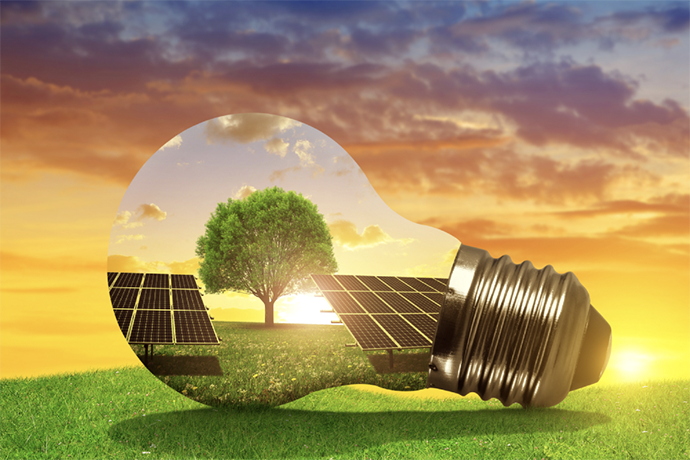 SPEAKERS
SPEAKERS
 TOPICS
TOPICS
Global warming and droughts are two of the major problems of our times as we feel the effects of climate change more and more. Climate change is one of the most important topics being discussed today as it is affecting not only the landscape but also human related factors.

The energy coming from sources or processes that are constantly replenished is called renewable energy. These sources include solar energy, wind energy, geothermal energy, and hydroelectric power.
The term renewable sources are usually associated with green energy and clean energy, but there are a few differences between these three energy types. What we call renewable energy is the sort of energy which is recyclable and clean energy is the kind of energy which does not release pollutants into the atmosphere.
Green energy is that which comes from natural sources. There are many sources of energy on our planet, both sustainable and unsustainable, as there are also many ways of making use of these resources with sustainable methods so that we can transfer them to next generations. Environmental policies are being modified accordingly which help reduce the devastating effects of climate change.
Despite the solutions offered by renewable energy foır the future of our power needs, humans have been harnessing the natural power of nature for many centuries. It was quite simple, the sun was used to create heat and light and water wheels and windmills were used to power granaries. However, as time passed, what nature provided us was not enough anymore and we have become more and more dependent on fossil fuels including coal and natural gas. Not only that, but the fact that these types of energies have been used widely, we’ve started to feel a detrimental effect on the planet.
Temperatures increasing and the number of extreme weather conditions getting higher meant loss of natural habitats. In fact, when these resources are used efficiently and properly, it will be possible to preserve the environment and its harmony.
It’s no easy task to take the environment into consideration and produce energy for daily life. This is where the idea of sustainability comes into picture. It’s all about the systematic work where natural resources are used and renewed to make sure human life can keep on existing on the planet.
There are a range of renewable resources which have been developed depending on factors like geographical location, requirements for use and the time of the year. The types of renewable energy sources are as follows:
Energy stations consisting of solar panels and wind turbines combined have been generating energy. Power stations with solar and wind power are now being preferred as they are capable of self-production. As we mentioned earlier, geographical location factors play a great role in building energy power plants. For instance, solar panels are best installed on flat areas where the ground allows the installation to spread. Also, regarding the climate conditions, when solar panels are installed in areas where the number of sunny days is high, there is less heat dissipation. Depending on these factors, roof-top solar panels help meet the entire energy needs of the building.
In the same way, areas with high altitude are the right places for wind turbines. Especially at places with high winds, power generation increases. Just like solar and wind powered plants, another renewable energy resource, geothermal power plants need to be built where geothermal activity is observed.
There are many benefits offered by renewable energy. A freely available source of energy generation, nature is the key and we need to do everything possible to preserve it for our very own good. In developing nations, greater energy access can be offered by renewable resources, the statistics show. Reduced energy bills are possible by the same way.
It seems like renewable energy has the potential to provide a ready supply of power without abusing natural resources. It can be the answer to many of our concerns. This is one of the main reasons which makes renewable energy important. At the same time, environmental problems like fuel spills and issues with emissions become lower risks when renewable energy sources are used efficiently and carefully. It reduces the need for imported fuels. In order to meet our energy needs in the coming years, it would only be wise to use renewable energy sources with reliable supplies and fuel diversification.
All natural resources should be used efficiently and sensibly to maintain urban life in cities and preserve the ecological system. Cities where green and cement are balanced seem to be the places with an understanding of sustainability. Landscape architecture, city planning and environmental engineering presented us with the idea and concept of sustainable cities.
Sustainable cities are possible to build when the human factor is working and when people are willing to change things. There is also ecological sustainability to talk about. Ecological sustainability makes it possible to balance the use of water for green areas in cities. Ecological sustainability practices help reduce the negative effects of fossil fuel emissions and work against global warming.
Ecologic and sustainable cities are being designed thanks to raised awareness and the right action taken by the experts. The air of urban areas is changing and rainfall is being optimised by using biomass energy. All these activities are under the same umbrella: sustainability.
Global climate change makes it harder on developing cities and highly populated areas as it causes severe environmental problems. The environmental impact of humans on the planet has been discussed for many years but little has been done to overturn it. Recently, environmental spaces are being created to tackle the global problems and to make the cities ecologically sustainable. Recycling makes it possible for different sorts of materials to be reused. It also helps to reduce the use of nonrenewable energy sources. Simple efforts such as building recycling units for paper, glass and plastic can go a long way. The awareness for climate change, global climate problems and the future of communities is rising. This fact alone results in building more recycling units and more recycling plants.
Thanks to innovative and less expensive ways to capture and retain different energy types, our reliance on dirty energy is becoming less. Obviously, there’s a lot to be done but renewables are becoming a more important power source, especially in the United States, accounting for more than 12% of US energy generation. Hopefully other countries will follow and the number of successful implementations will increase so that we can preserve harmony on our planet.
If you’d like to find out more about sustainability, ecologic cities, renewable energy sources, global climate issues and reuse-reduce-recycle concepts, please contact Speaker Agency and learn from our expert Sustainability Speakers Dr. Parag Khanna, Goran Carstedt, Ambarish Mitra, Dr. Behice Ece Ilhan and Greg Lindsay about the topics which concern you.